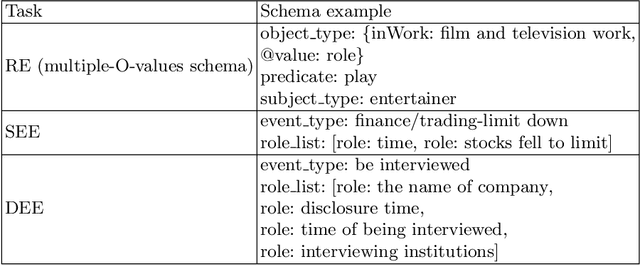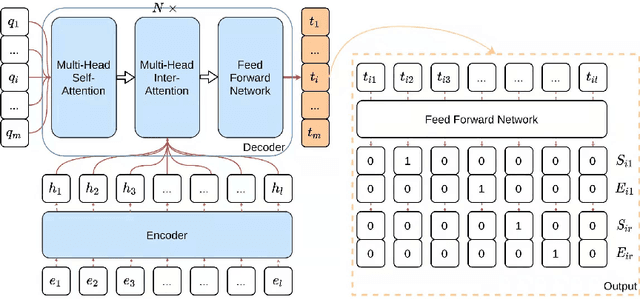Yaduo Liu
A Novel Global Feature-Oriented Relational Triple Extraction Model based on Table Filling
Sep 14, 2021Abstract:Table filling based relational triple extraction methods are attracting growing research interests due to their promising performance and their abilities on extracting triples from complex sentences. However, this kind of methods are far from their full potential because most of them only focus on using local features but ignore the global associations of relations and of token pairs, which increases the possibility of overlooking some important information during triple extraction. To overcome this deficiency, we propose a global feature-oriented triple extraction model that makes full use of the mentioned two kinds of global associations. Specifically, we first generate a table feature for each relation. Then two kinds of global associations are mined from the generated table features. Next, the mined global associations are integrated into the table feature of each relation. This "generate-mine-integrate" process is performed multiple times so that the table feature of each relation is refined step by step. Finally, each relation's table is filled based on its refined table feature, and all triples linked to this relation are extracted based on its filled table. We evaluate the proposed model on three benchmark datasets. Experimental results show our model is effective and it achieves state-of-the-art results on all of these datasets. The source code of our work is available at: https://github.com/neukg/GRTE.
An Effective System for Multi-format Information Extraction
Aug 16, 2021



Abstract:The multi-format information extraction task in the 2021 Language and Intelligence Challenge is designed to comprehensively evaluate information extraction from different dimensions. It consists of an multiple slots relation extraction subtask and two event extraction subtasks that extract events from both sentence-level and document-level. Here we describe our system for this multi-format information extraction competition task. Specifically, for the relation extraction subtask, we convert it to a traditional triple extraction task and design a voting based method that makes full use of existing models. For the sentence-level event extraction subtask, we convert it to a NER task and use a pointer labeling based method for extraction. Furthermore, considering the annotated trigger information may be helpful for event extraction, we design an auxiliary trigger recognition model and use the multi-task learning mechanism to integrate the trigger features into the event extraction model. For the document-level event extraction subtask, we design an Encoder-Decoder based method and propose a Transformer-alike decoder. Finally,our system ranks No.4 on the test set leader-board of this multi-format information extraction task, and its F1 scores for the subtasks of relation extraction, event extractions of sentence-level and document-level are 79.887%, 85.179%, and 70.828% respectively. The codes of our model are available at {https://github.com/neukg/MultiIE}.
 Add to Chrome
Add to Chrome Add to Firefox
Add to Firefox Add to Edge
Add to Edge